What to Do in Córdoba.
Córdoba is one of our favorite Spanish cities, one we’ve visited 3 times now. It is one of Spain’s great historic cities, the capital of Islamic rule on the Iberian peninsula for several centuries. But there’s also Roman history as well as Catholic History: Córdoba was the headquarters of the Inquisition and where Christopher Columbus met the Catholic Monarchs when planning his trip to the New World.
There’s lots to see in Córdoba, starting with one of Spain’s greatest highlights (the Mezquita). All about that and more in this post.
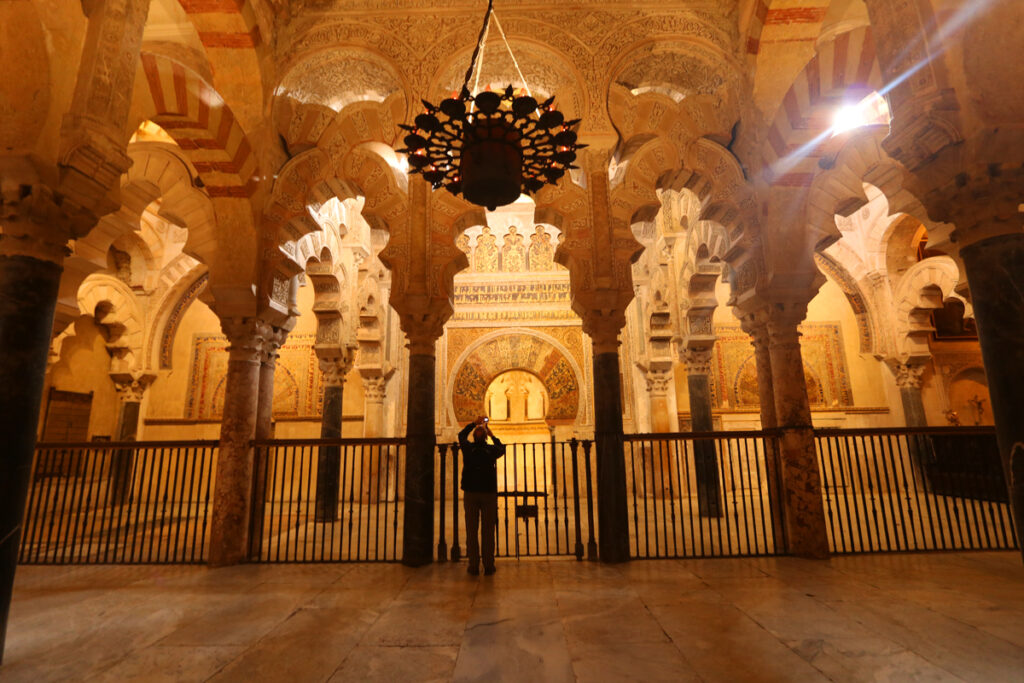
Córdoba’s Mezquita
We’ve had the fortune to see some incredible religious buildings over the years, places like the Vatican, the Hagia Sofia and Wat Phra Kaew. Of those, it is Córdoba’s Mezquita that made the biggest impression on us. It is jaw-dropping.
You might hear the building called different names. It is commonly known as the Mezquita de Cordoba (Cordoba Mosque). It is also Cordoba Cathedral or the “Cathedral of Our Lady of the Assumption” (its owners are the Catholic church). It is also called the “Cordoba – Mosque Cathedral” after a dispute between the church and the city over the name a few years ago. I am going to call it the “Mezquita”, it’s what locals call it.
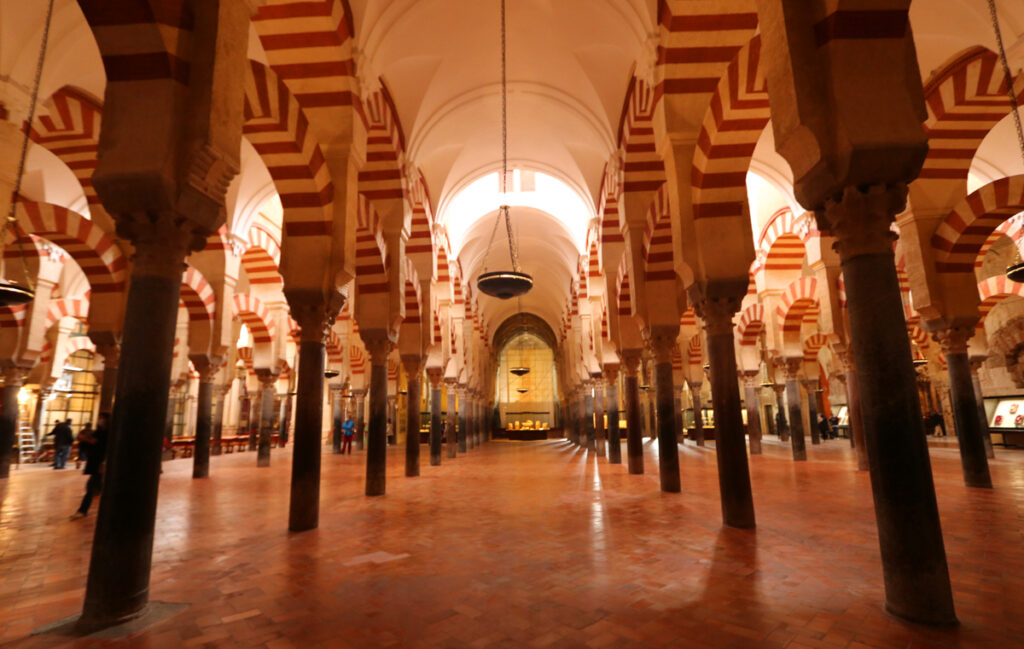
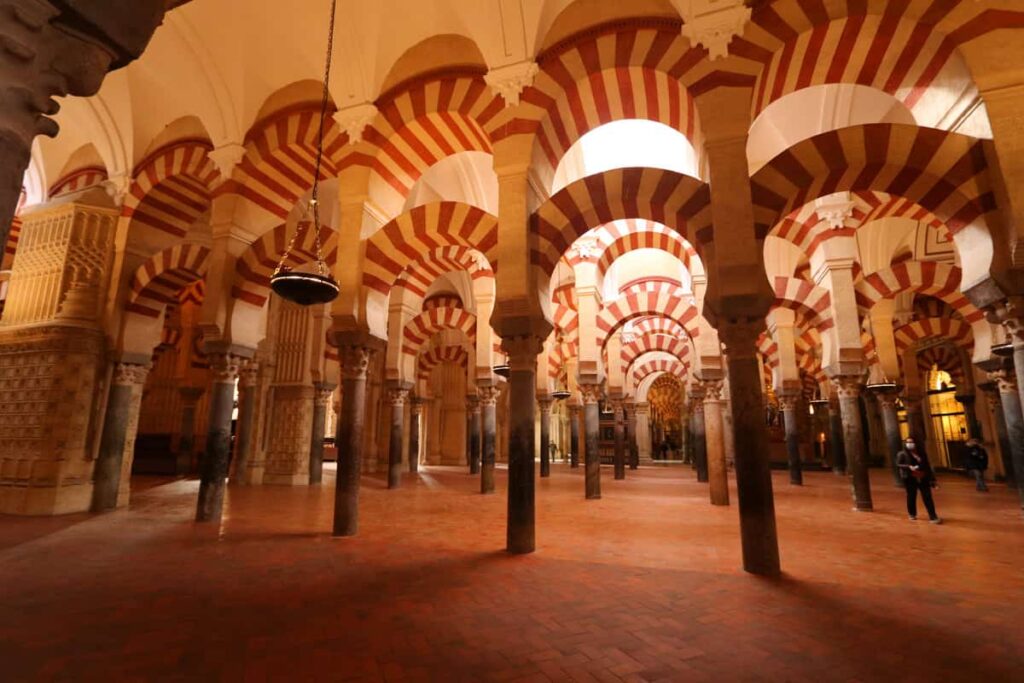
It is both a UNESCO site as well as one of the “12 Treasures of Spain”. What makes the building so incredible are the mix of styles. The Mezquita is considered one of the two best examples of Islamic architecture in Andalusia (the other is the Alhambra in Granada). It also houses, in its vast interior, an exquisite Cathedral. While the mix of styles is confusing – and a blasphemy to some – the result is the best of both worlds in one incredible building.
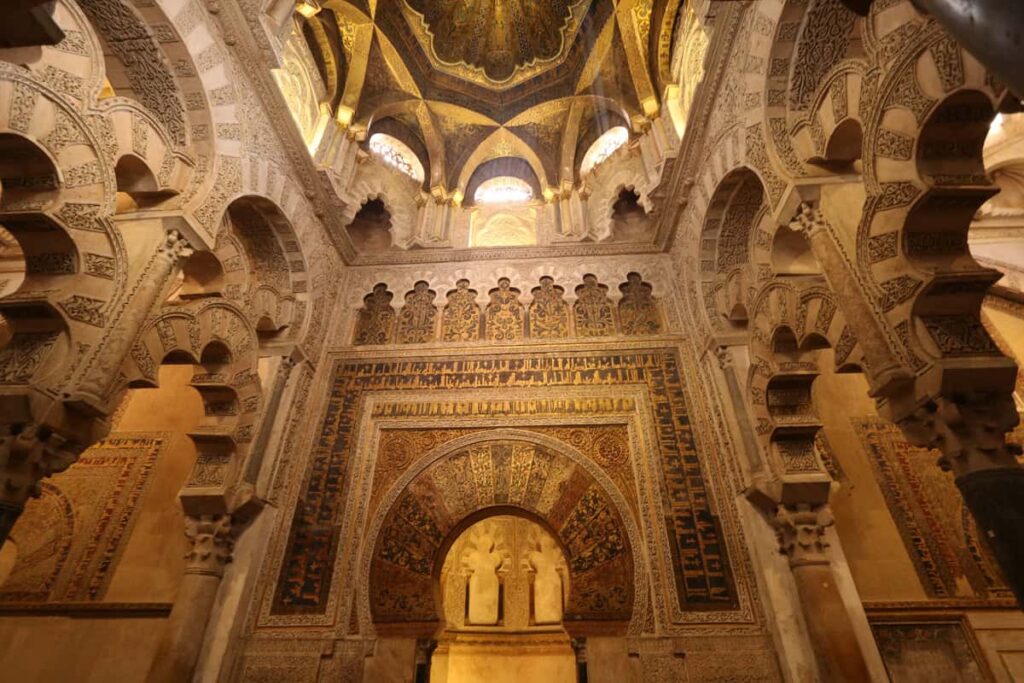
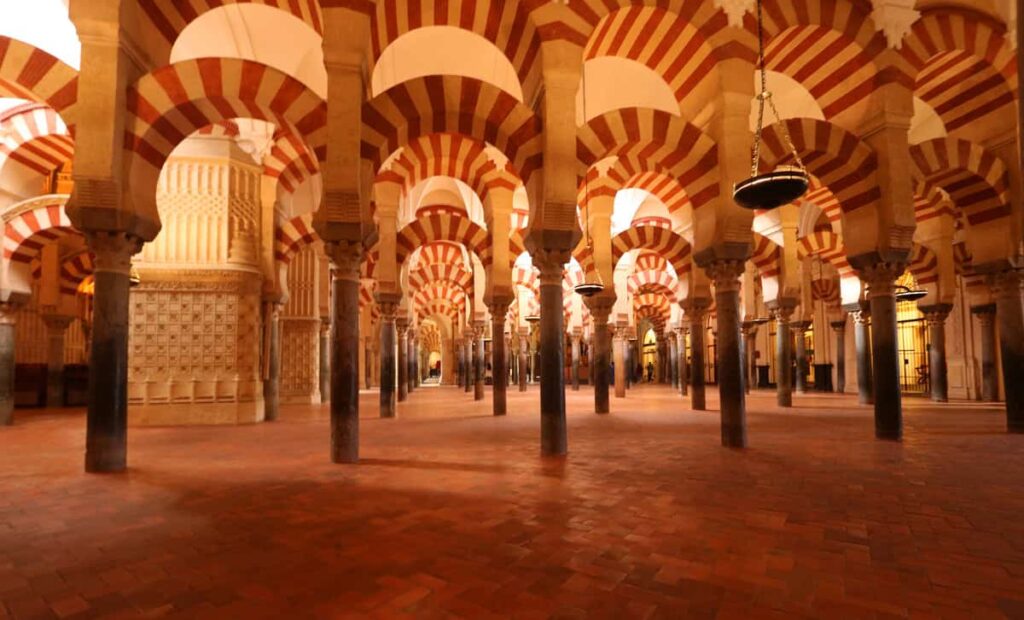
A Brief History of the Mezquita
– This location was first the site of a small Christian church
– Following the Moorish conquest of most of Iberia in 711 AD, the church was divided into Christian and Muslim halves.
– The sharing arrangement lasted until 784 AD when the Emir bought the Christian half and then proceeded to demolish the structure. The building of a new mosque, the present Mezquita, started and would take 200 years to finish.
– In 1236, following the conquest of Iberia by Christian forces, the new rulers decided to build a Christian Cathedral in the very heart of the Mezquita. It is this blend of history and architectural styles that you see today.
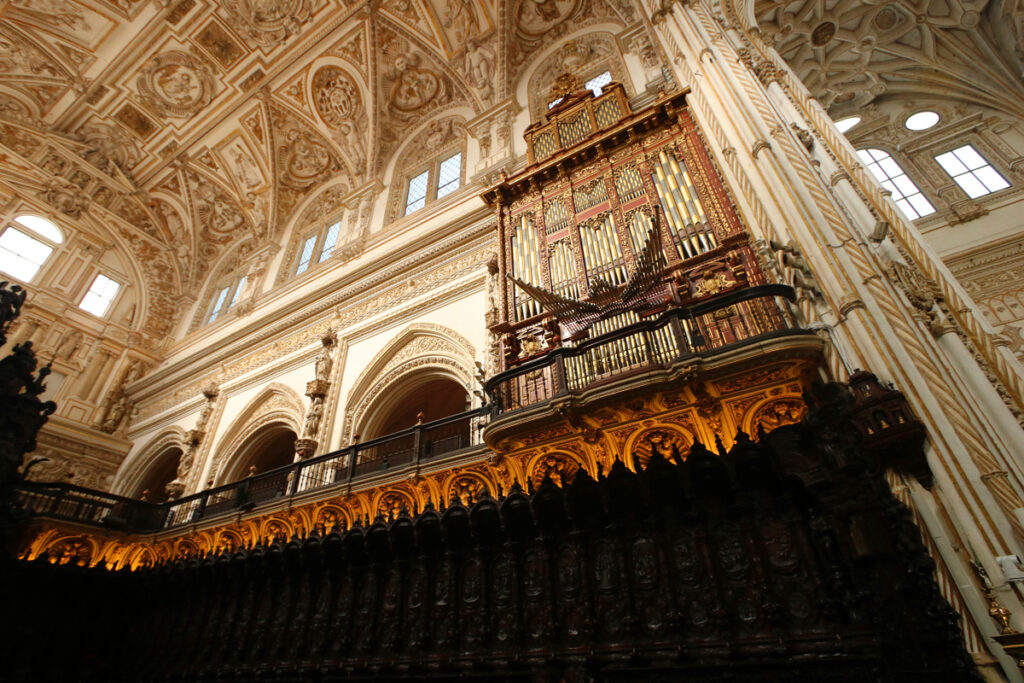
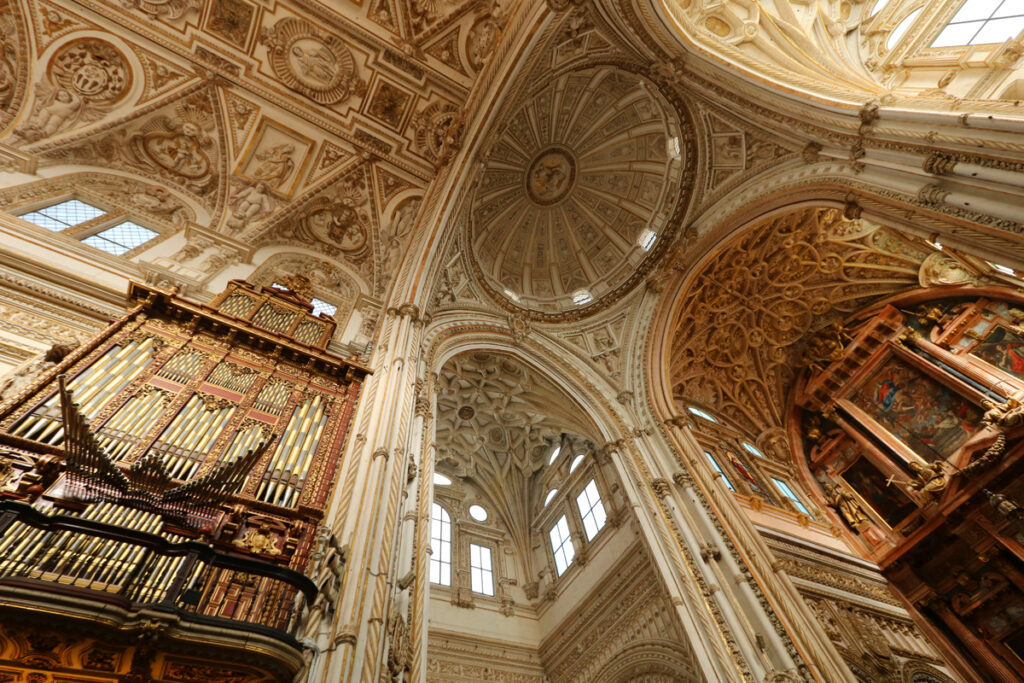
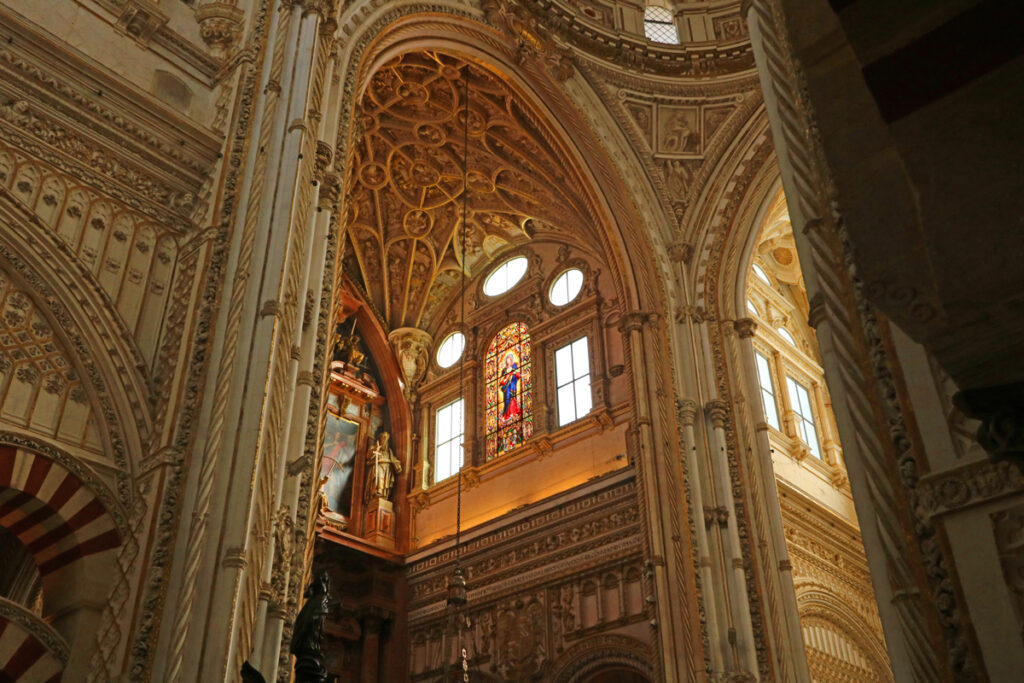
We’ve been to the Mezquita several times and usually spend about 2 hours in the building. But if you take your time with all the chapels along the walls you could easily spend 3-4 hours. What strikes you is the size and the beauty: the line of arches cover an area of nearly 120 sq metres (making the Mezquita one of the biggest mosques in the world) while the differing lighting affords ever-changing perspectives and plays of light on the arches, mosaics and frescoes. It is a stupendous building.
Tip: The Mezquita costs 13 Euros/person to enter. But there is free entry Mondays – Saturdays between 8:30 – 9:30. Not only is it free during that time, it is almost empty so you can enjoy it for yourself.
Tour: some people like to take a tour. If so, I really recommend this tour – you both skip the line for tickets AND get a guide showing you around for 2 hours.
Bell Tower: The Mezquita has a bell tower but it is a separate ticket than the Mezquita and they have different tours up the tower based on capacity. We had to come back later that day for ours. I would recommend you buy your ticket for the bell tower in advance before going into the Mezquita.
Website: The official website of the Mezquita – Catedral de Córdoba. Here you can pre-buy your tickets to the Mezquita and the Bell Tower.
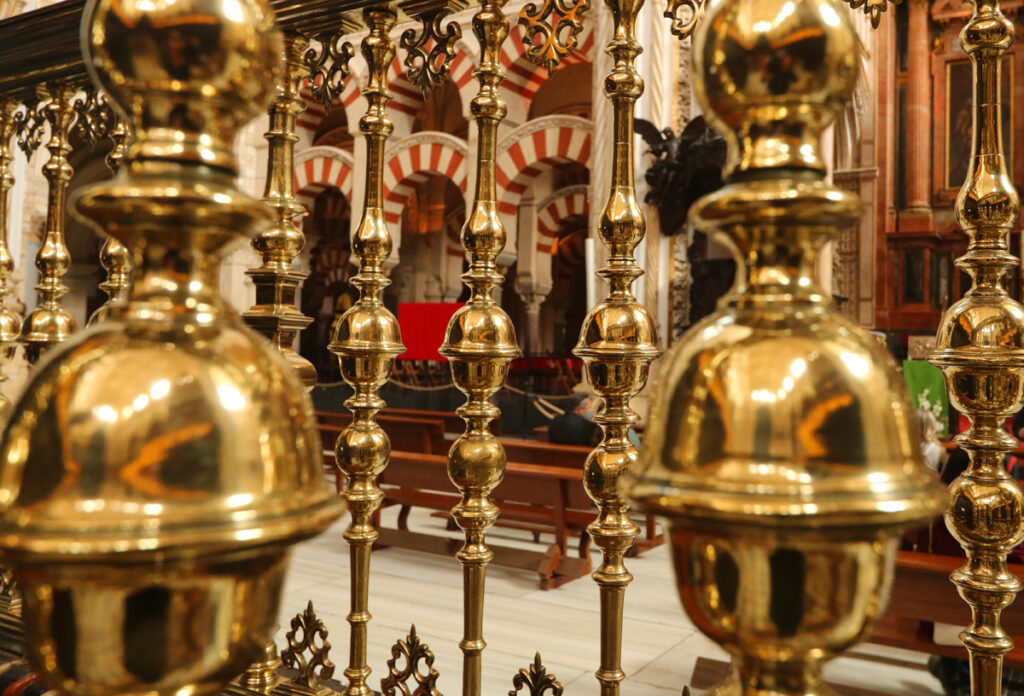
Roman Bridge
The Roman Bridge (Puente Romano) is a 16-arched bridge, which spans the Río Guadalquivir. The bridge was originally built after Caesar’s victory over Pompey the Great in 48 BC (the battle was fought in Greece). The bridge you see today (built by the Moors) was constructed on the foundations of the Roman bridge.
At the end of the bridge you have a tower (the Calahorra Tower), an ancient defensive fortress that controlled access to the bridge. Today it houses the Al-Andalus Museum, it’s aim being to provide a recreation of Cordoba in the period between the 9th-13th centuries.
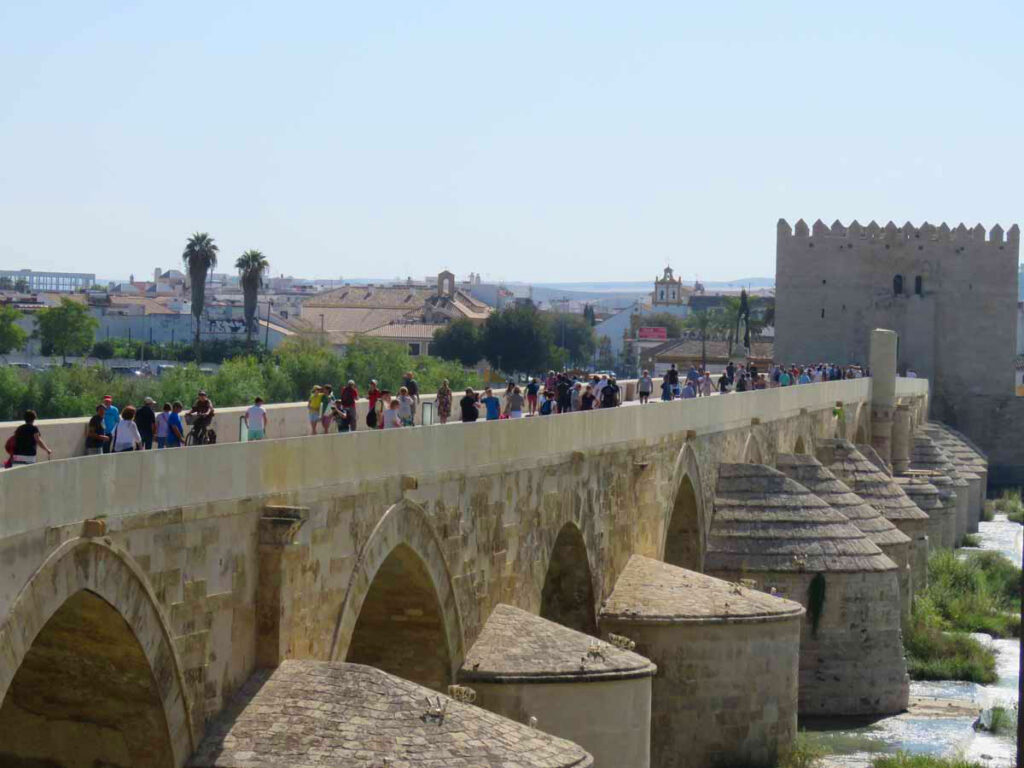
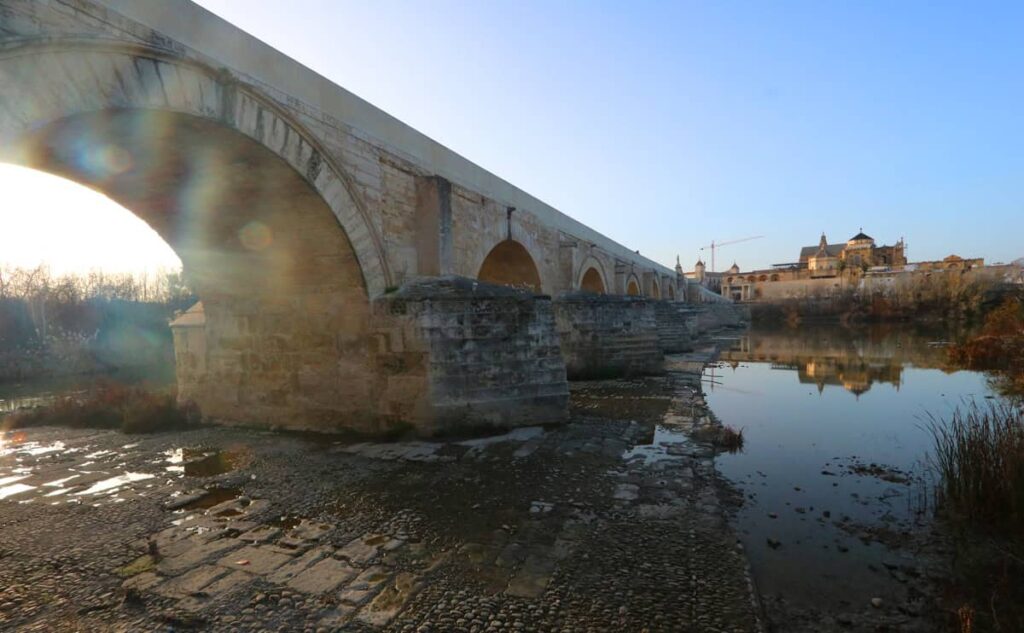
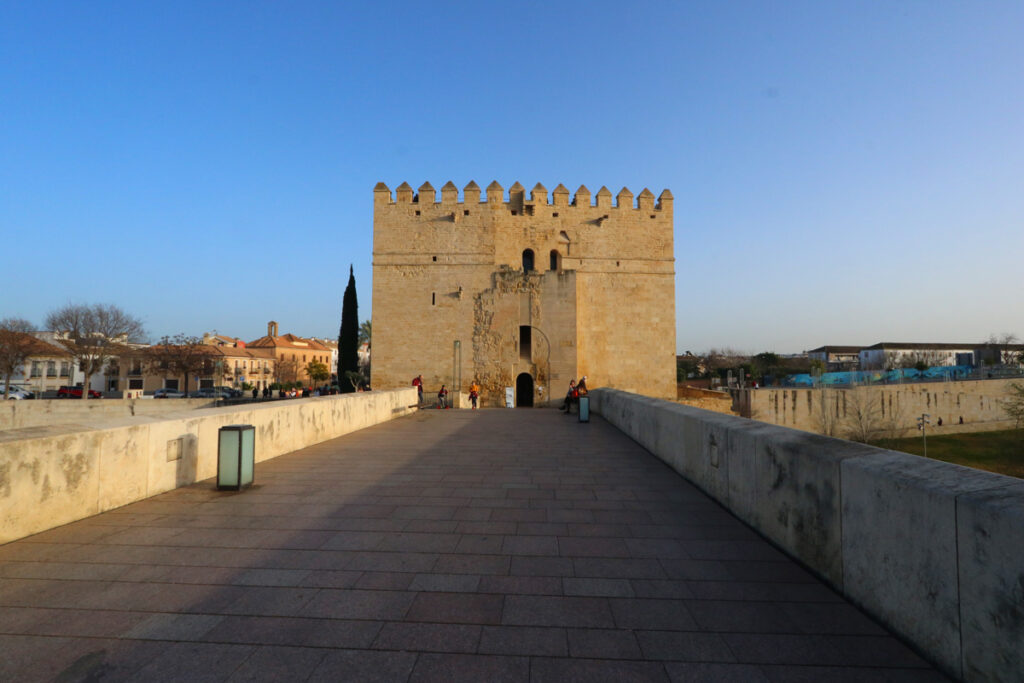
Alcázar of Córdoba
Full name: Alcázar de los Reyes Cristianos (ie. Palace of the Christian Monarchs). This fortress and palace was built in 1328, almost 100 years after the Spanish reconquest of Córdoba. It was later the home of the Catholic Monarchs Isabella and Ferdinand and the headquarters of the Inquisition in 1482 (the Alcázar’s main tower is known as the “Tower of the Inquisition”) as well as the base from which Isabella and Ferdinand commandeered the takeover of Granada in 1492 (the last Moorish stronghold in Spain). Later that same year, Christopher Columbus came to the Alcázar to meet with the Monarchs when planning his first trip to the Americas.
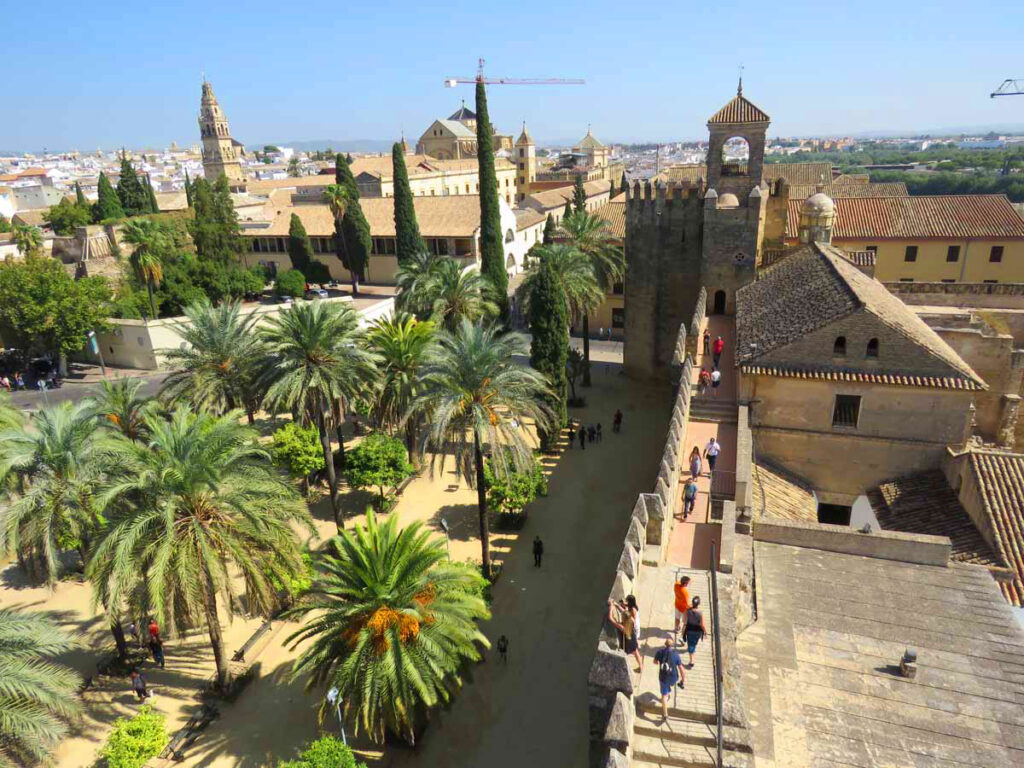
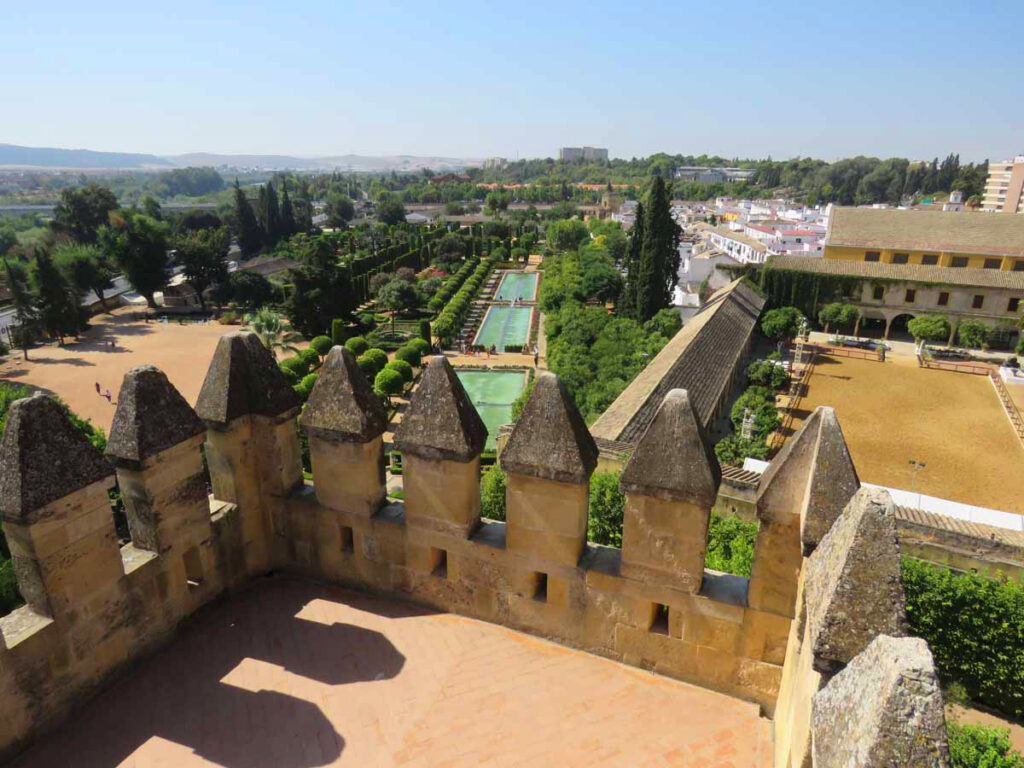
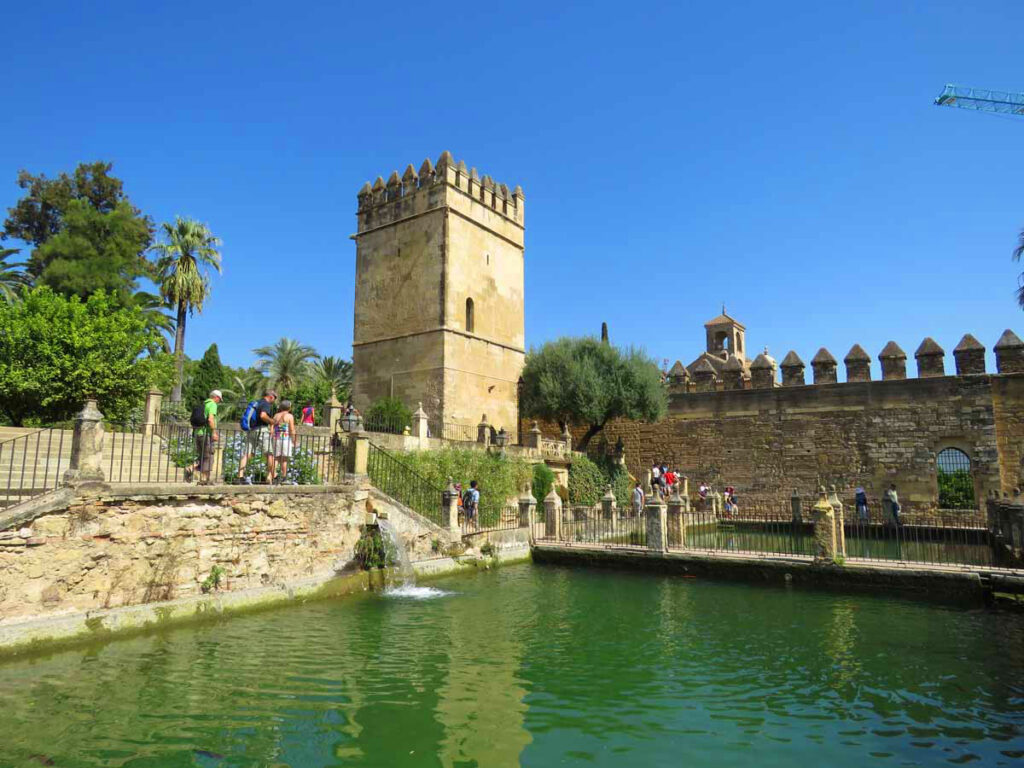
The Juderia
The Juderia (Jewish district) of Córdoba is located in the area surrounding the Mezquita. The Jews were prosperous during Islamic rule, even holding high-level positions in government and finance. After the Christian takeover in 1236, life got harder for the Jews and the district was separated from the rest of the city by a walled enclosure. There were many forced conversions and, in 1492, King Ferdinand and Queen Isabella issued the Alhambra Decree, forcing all practicing Jews to convert to Christianity or be expelled from the country. Many Jews left for Portugal or North Africa.
Today the Juderia is one of Córdoba’s most interesting and attractive districts, with narrow, winding streets and whitewashed buildings. Highlights include the Gate of Almodovar, the Cordoba Synagogue and the Calleja de las Flores (a small alley lined with flowers…very popular with tourists).
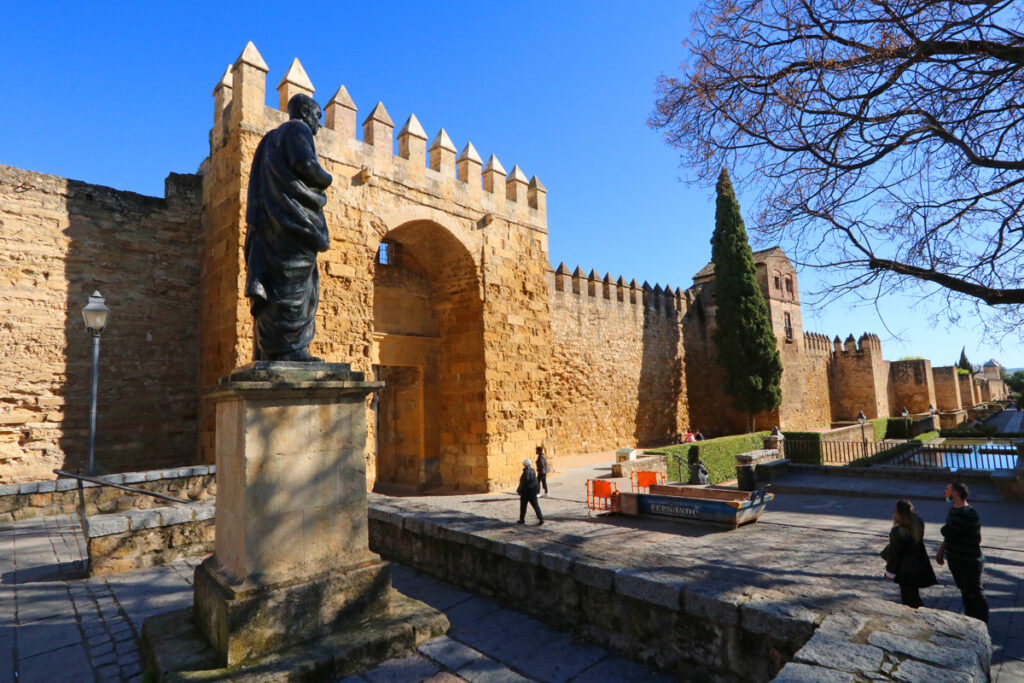
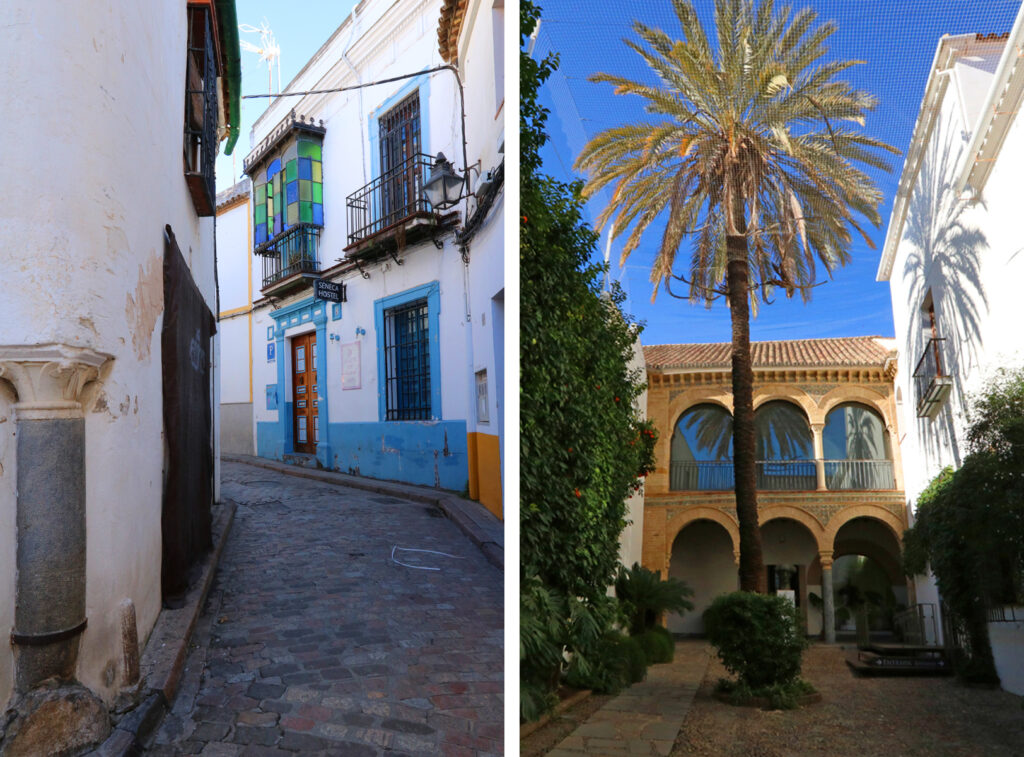
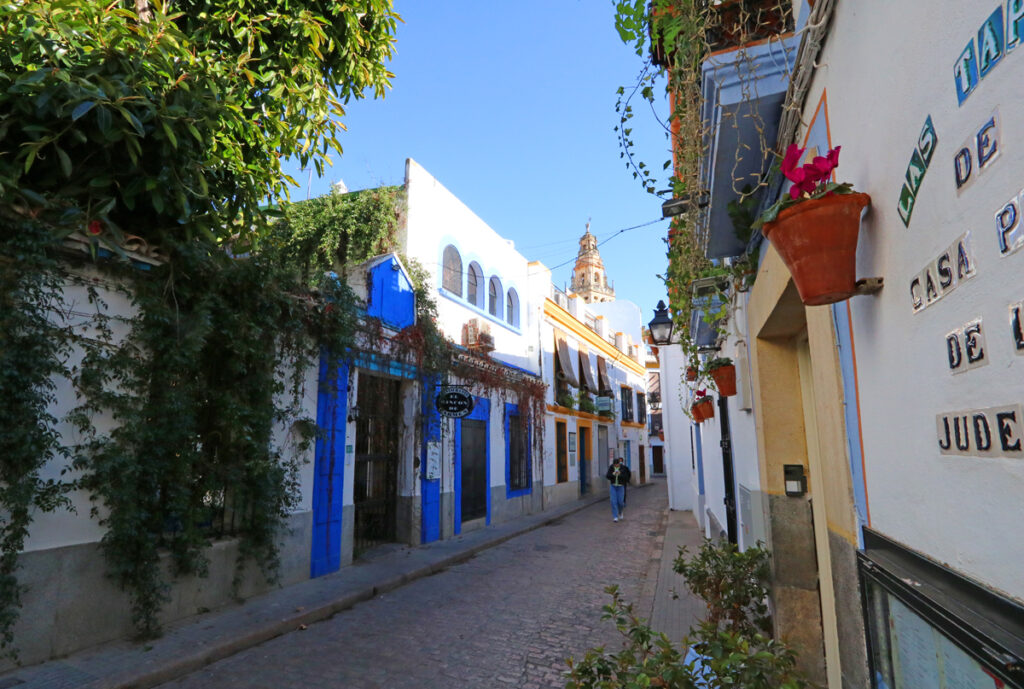
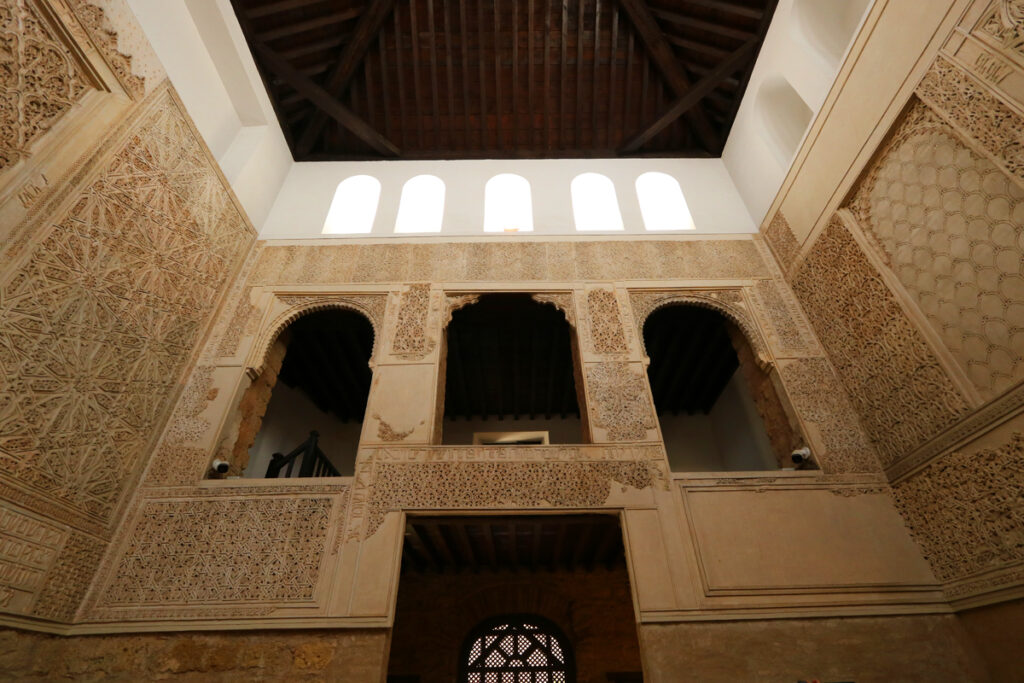
Palacio de Viana
A little out of the center is this 15th century palace. It was built in typical Mudejar style (Mudéjar is an architectural style that commingles both Moorish and Spanish Christian elements). The Palace is somewhat similar to Seville’s Palacio de las Dueñas with its courtyards and Spanish paintings and furniture. But what really stands out at Palacio de Viana are the outdoor spaces. You’ll find 12 patios with decorative fountains and gardens. In it are palm trees, orange trees, colourful bougainvillea, jasmine.
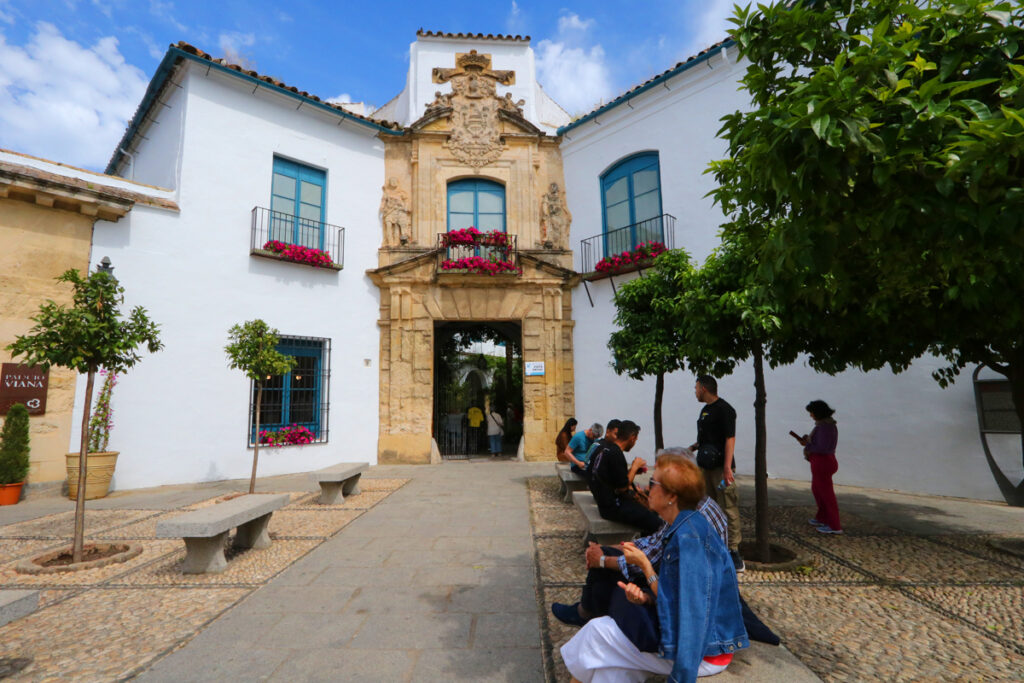
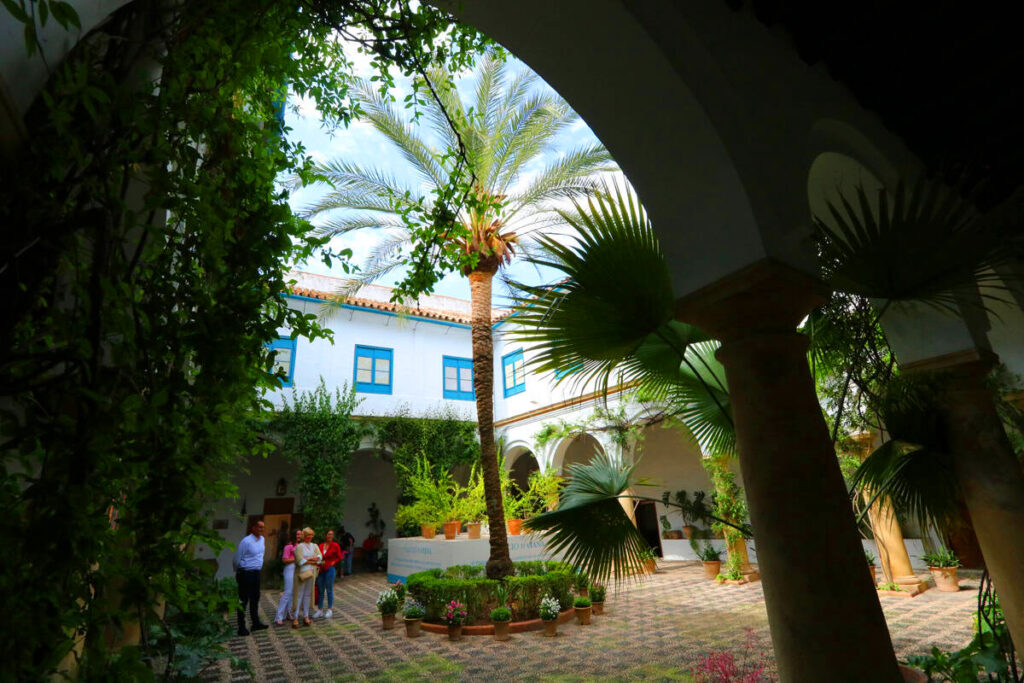
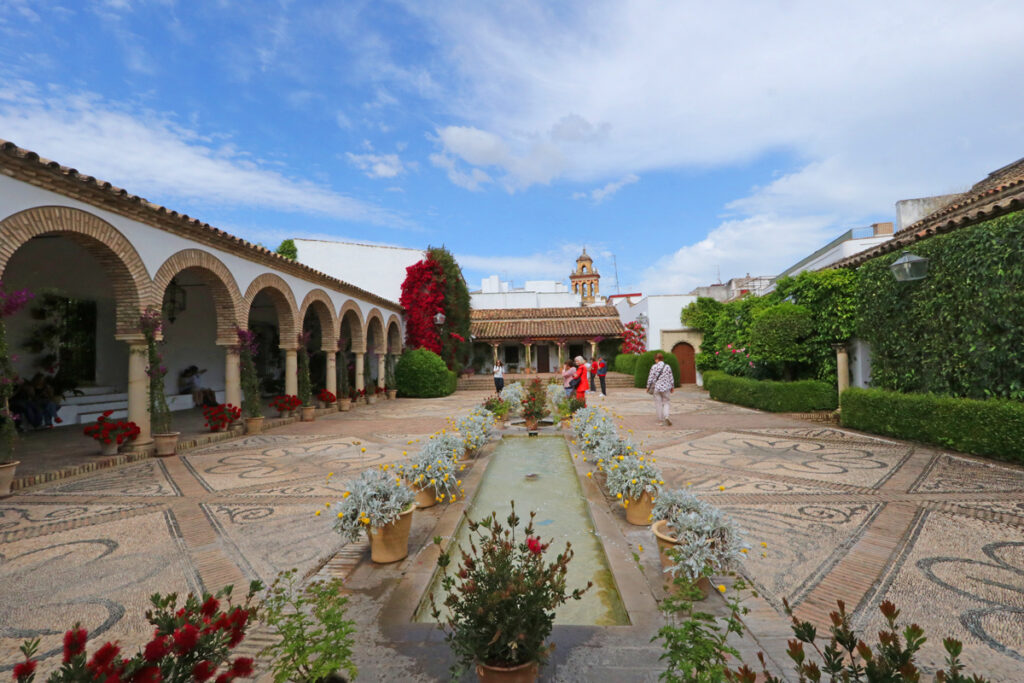
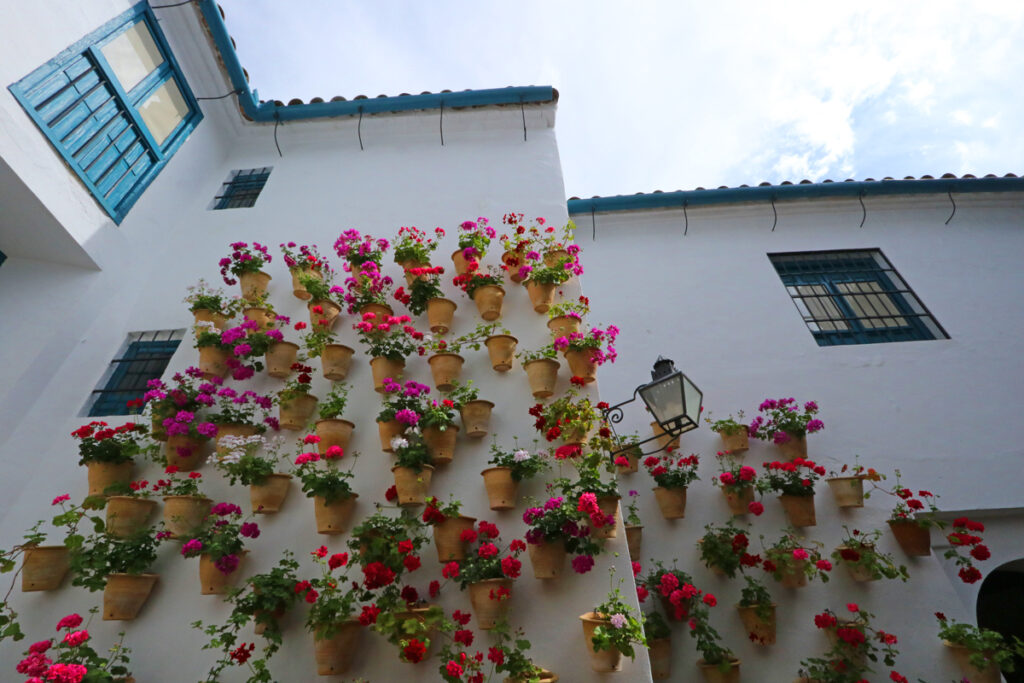
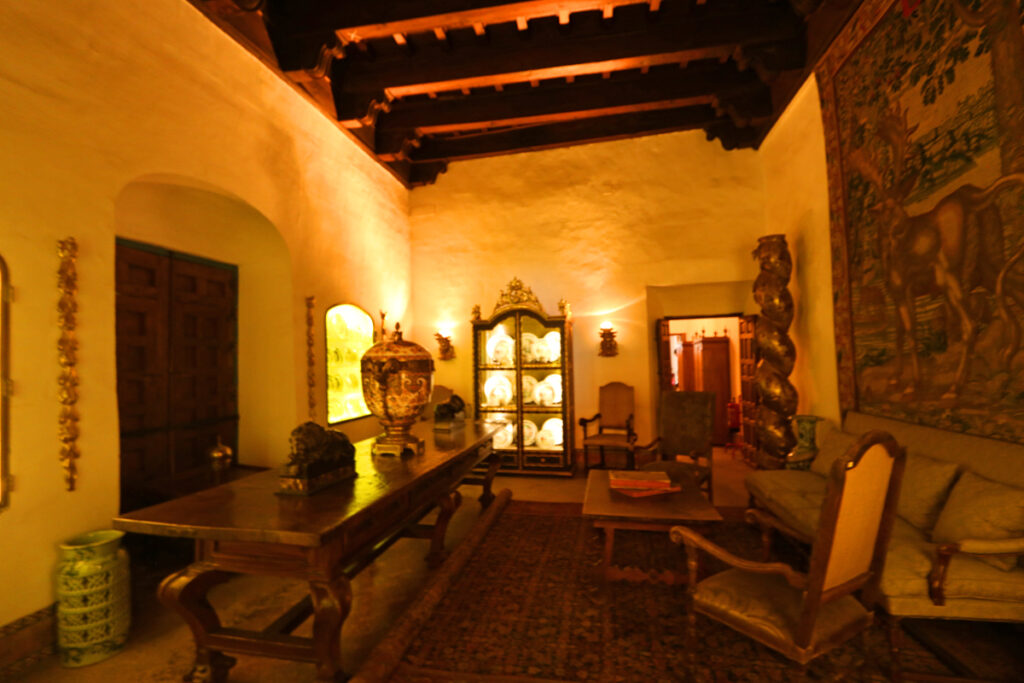
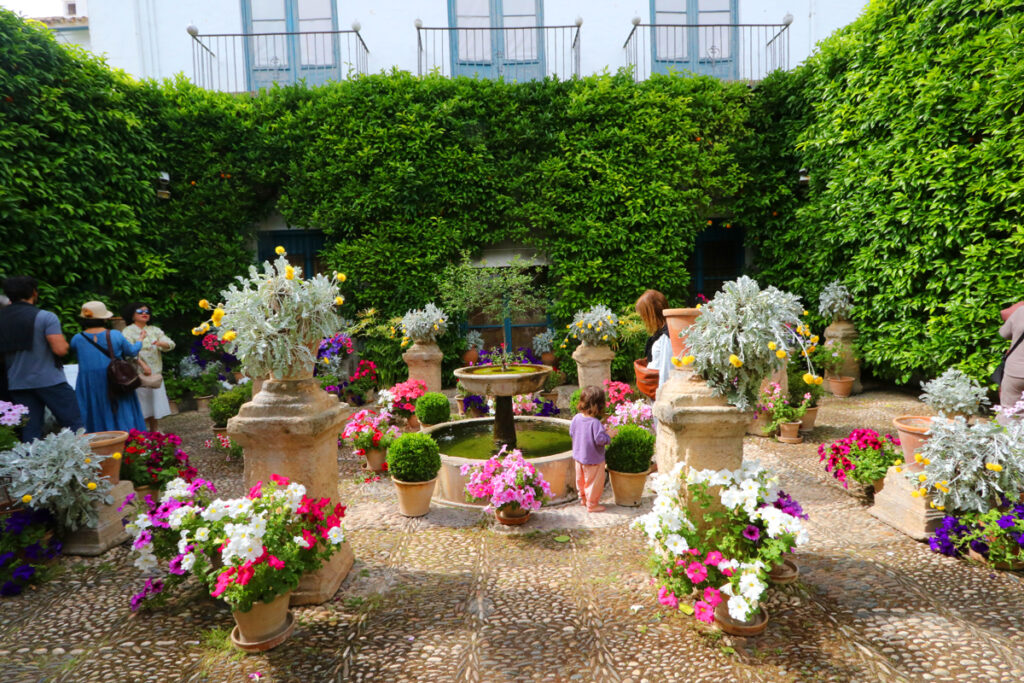
The Patios of Córdoba
Every May Córdoba has a festival called “The Patios of Córdoba”. It’s a flower and courtyard festival in one, a chance to visit different courtyards all over the city and admire the flowers and decorations adorning the courtyards. May is also a great time to visit because Córdoba is one of Spain’s hottest cities. More here on the Patios of Córdoba.
I really recommend a visit during this time: we came to see the Patios but, just following the different routes, discovered many little corners of Córdoba that we wouldn’t have seen otherwise. It gave us a whole other level of appreciation for the city
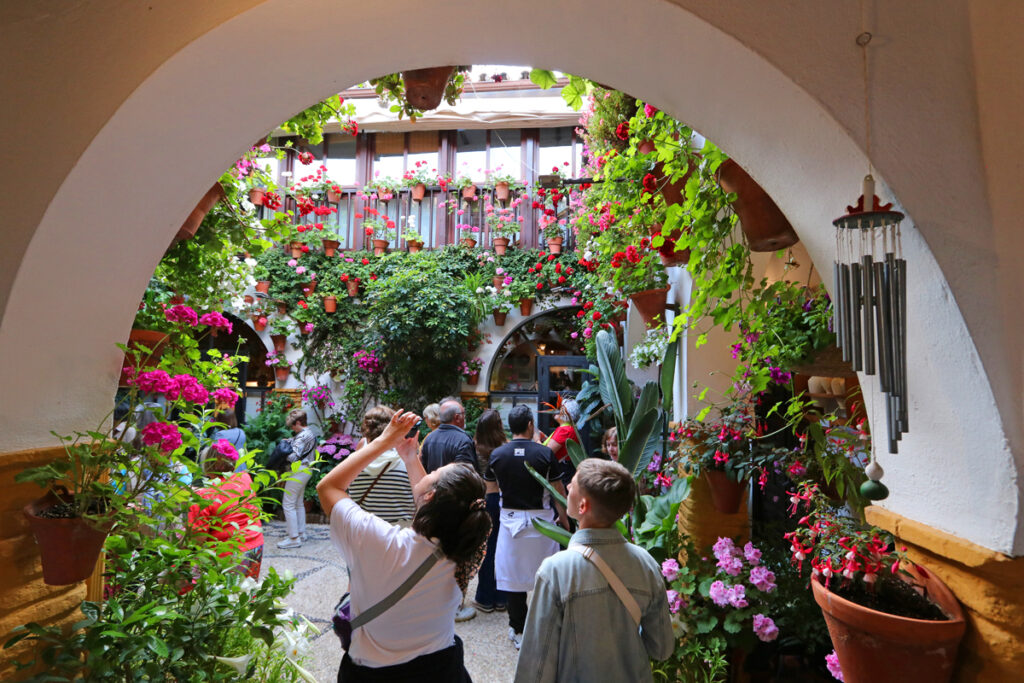
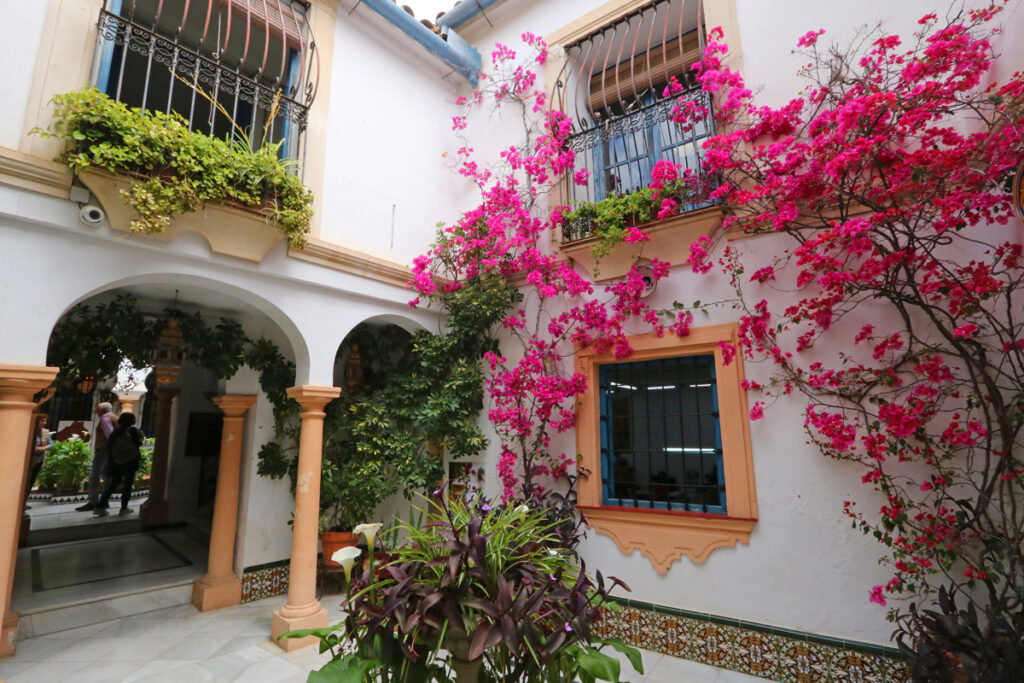
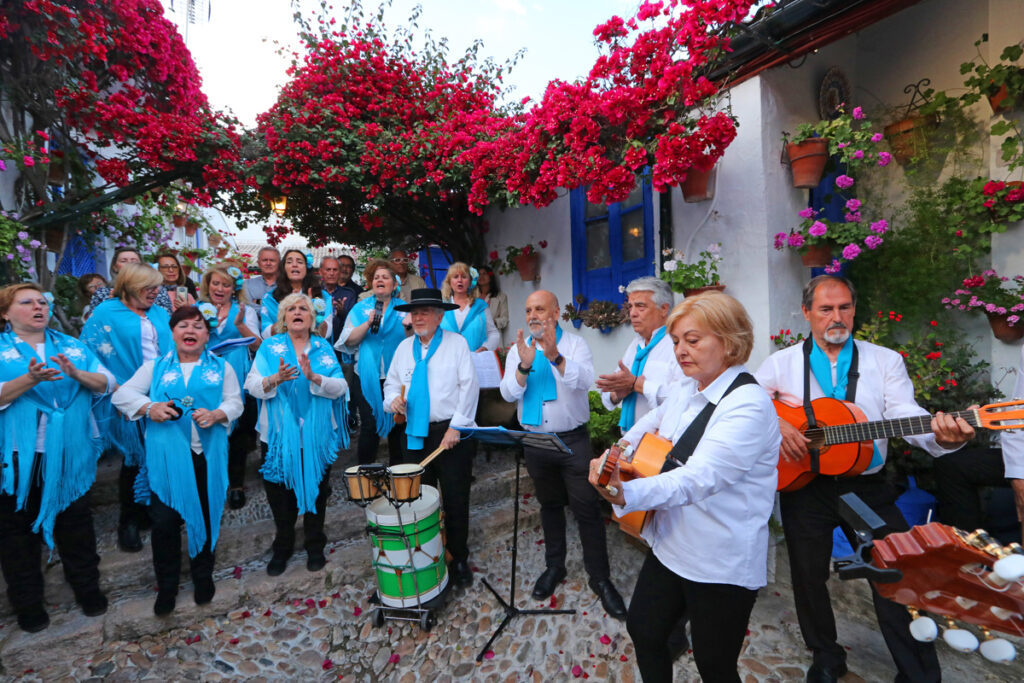
2 Great and Easy Day Trips from Córdoba
Slightly outside the city but easy to get to, both these day trip destinations give you a further appreciation of Córdoba’s history.
Almodóvar Castle
A fairy tale castle considered one of the best castles in all of Spain. It was also a filming location on the Game of Thrones, the castle playing the role of the fictional castle of Highgarden.
The castle was built by the Moors to defend the Guadalquivir river, the river that runs through the city. The castle is situated high above the river in a small town called Almodóvar del Río. Easy to get to (30 minutes by bus which brings you right to the castle), it is absolutely worth a visit. All about Almodóvar Castle here.
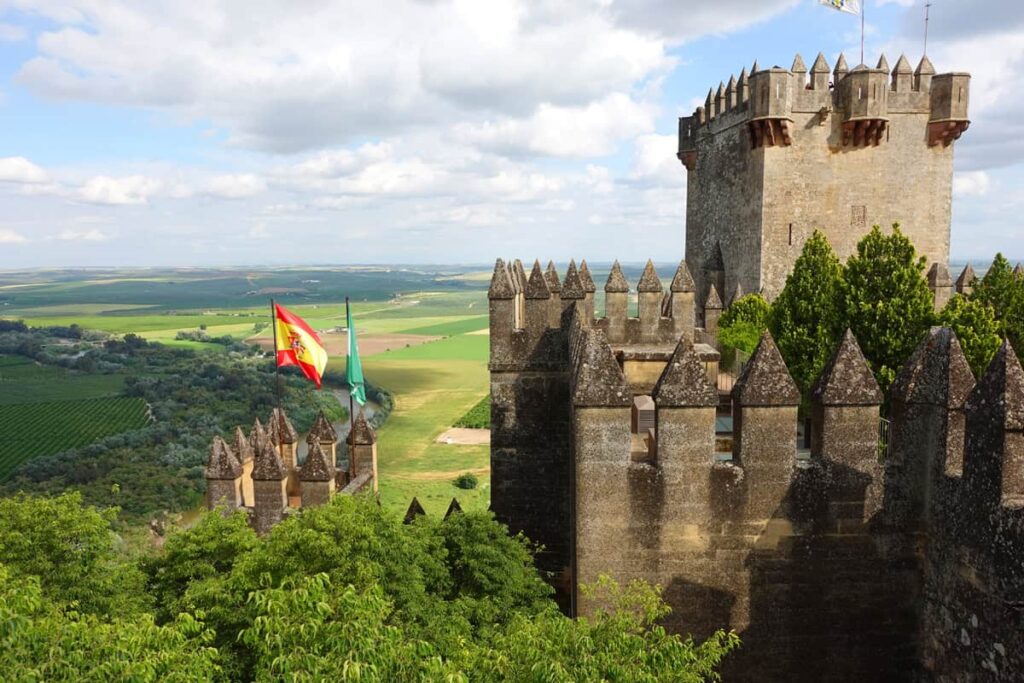
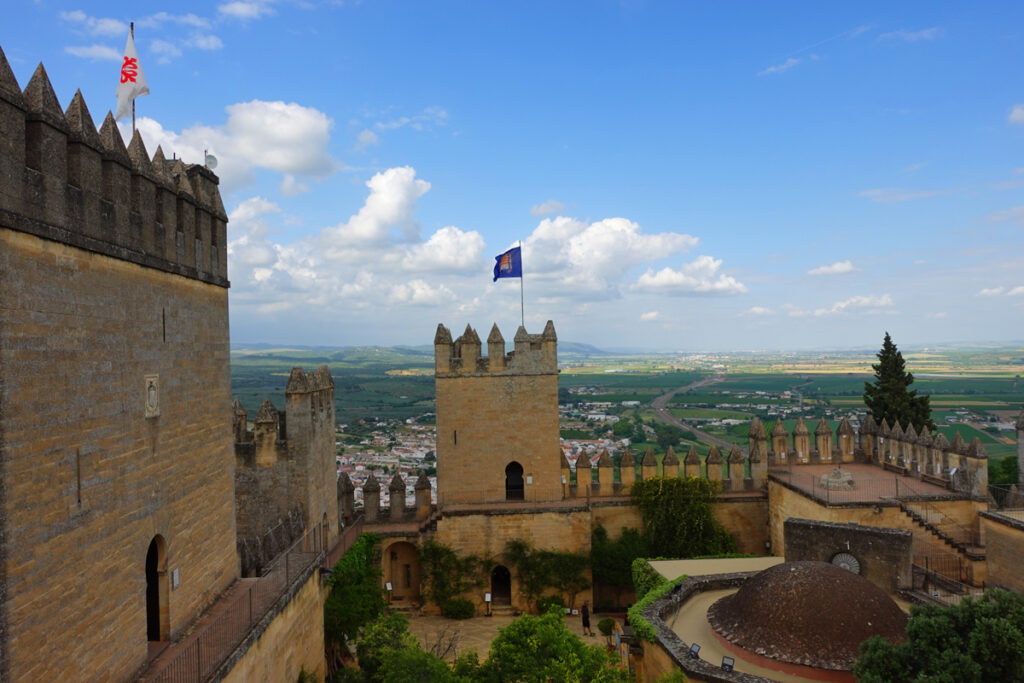
Medina Azahara
When the Moors took over the Iberian peninsula in 711 AD, they established Córdoba as their capital. 200 years later, after infighting among different Muslim leaders, Abd al-Rahman III gained control of most of the Iberian peninsula. In 929 he declared himself “Caliph” – or ruler of the Islamic World and did what Caliphs at the time did: he decided to build himself a new city. That was Medina Azahara. Unfortunately the city only lasted 75 years. All about Medina Azahara in this post.
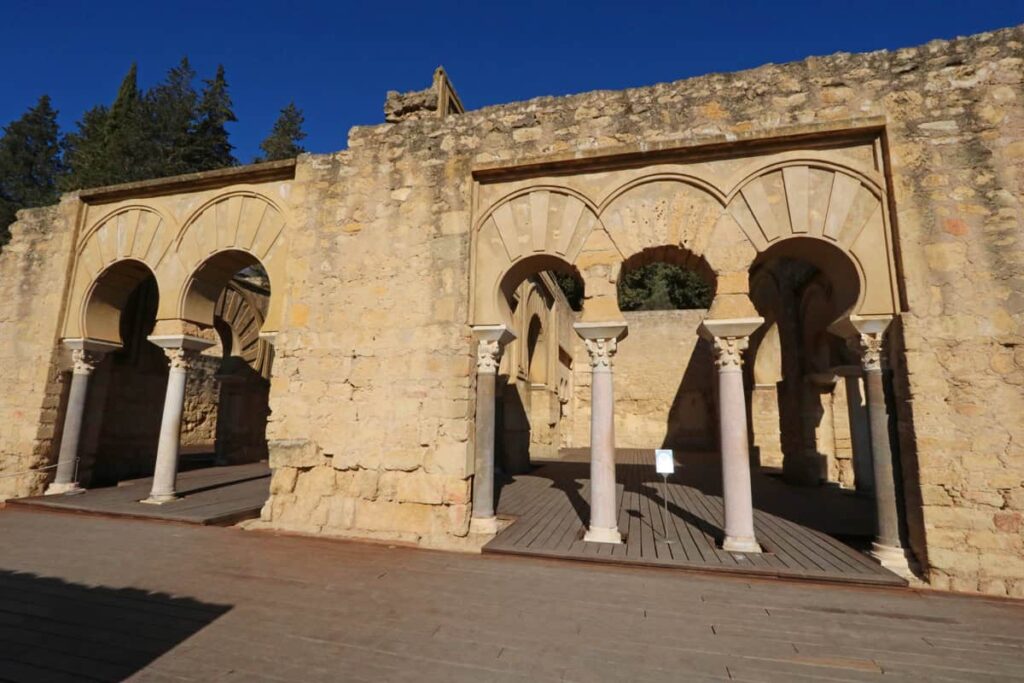
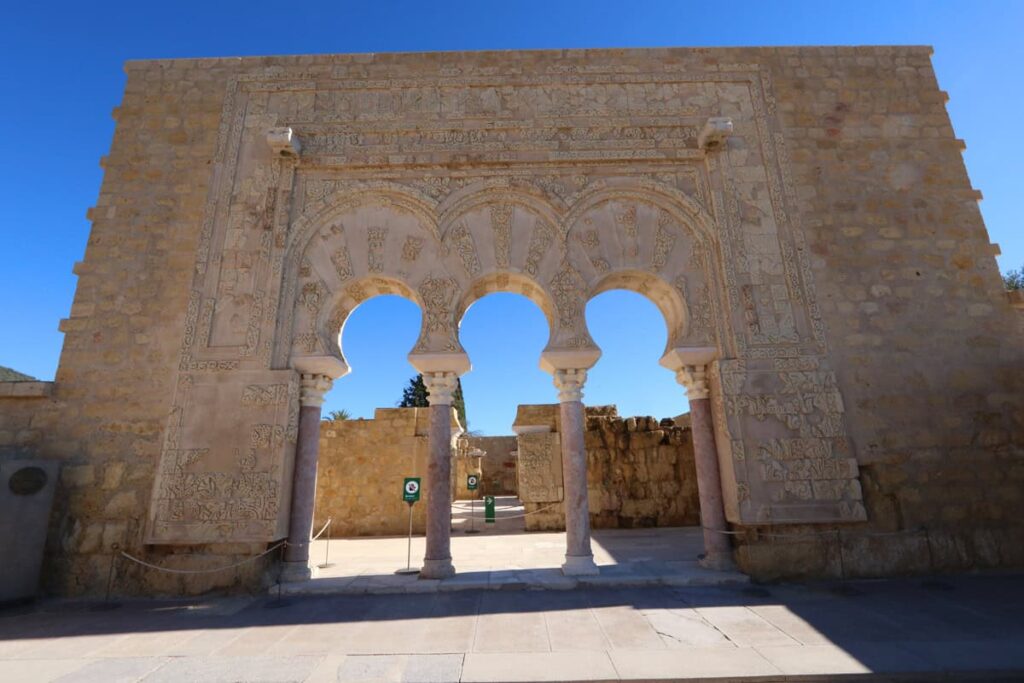
Practical Information
– Train. Córdoba is easy to get to by high speed train; 40 minutes from Seville, 1 hour from Malaga, under 2 hours from Granada, 2 hours from Madrid.
– When you arrive, there is a tourist office in the train station where you can pick up a free map. I’ve also included a map here (just click on it and print it out).
– The best way to the Mezquita (which is right in the Juderia) is to walk straight out of the train station and make a right at the first street. You’ll be walking through a very pretty park – follow that about 20 minutes and you’ll get to the center (walk left through one of the old city gates).
– Accommodation. I think Córdoba really deserves at least 1 night but I’d suggest a longer stay to explore further. On our last visit we stayed at we stayed at Patio del Lino (an apartment near Palacio de Viana) for 3 nights and wished we had stayed maybe another night. A couple of other recommendations that are more centrally located: Eurostars Conquistador (right in the center, very close to the Mezquita), NH Collection Amistad Córdoba (gorgeous hotel with nice pool, also close to the Mezquita).
– If you prefer to take a tour, this one is recommended. It covers all of Córdoba’s highlights including the Mezquita.
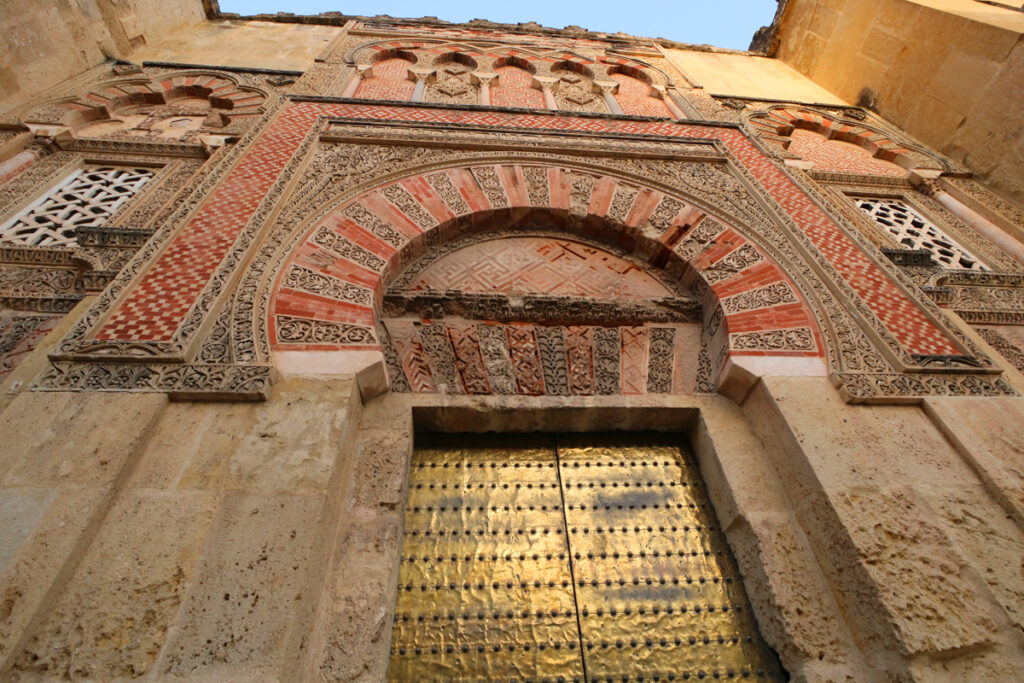
Summary
Córdoba is fantastic. I’ve listed the main highlights but you could spend a week here exploring and you’d discover lots of beautiful little streets, squares and churches not listed in any guide book. It’s a magical city.
Related: 2 Days in Granada
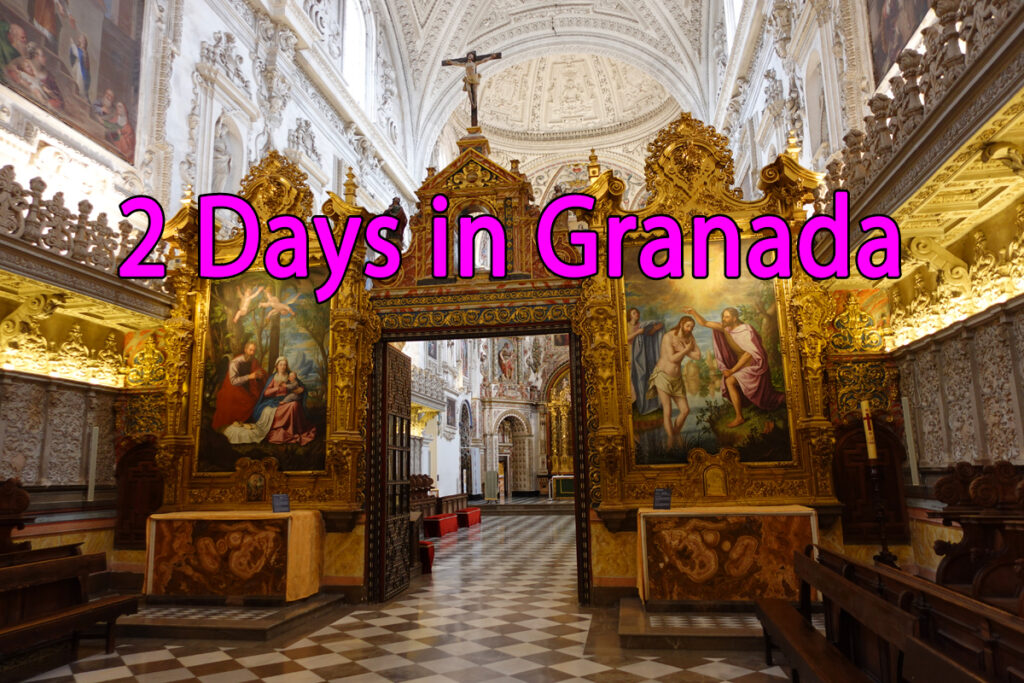
Related: Seeing the highlights of Seville- and saving money!
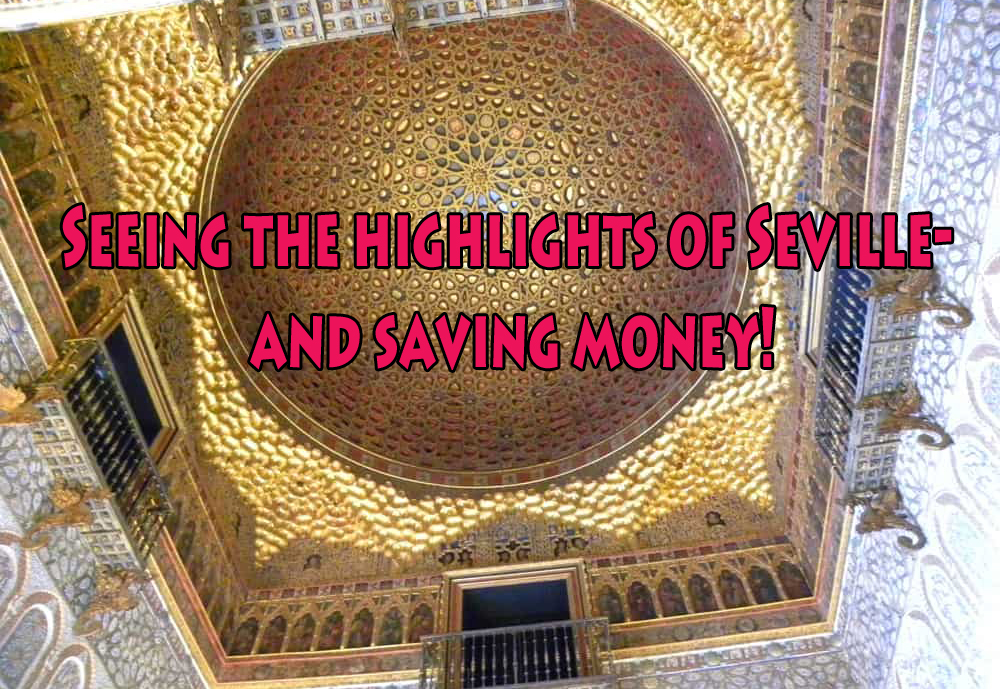

Leave a Reply